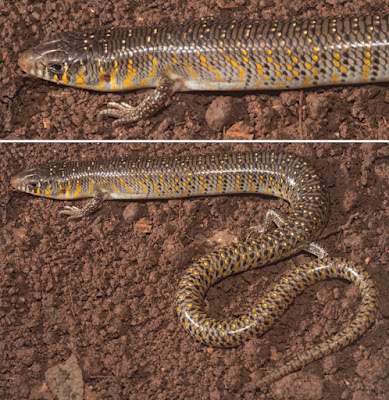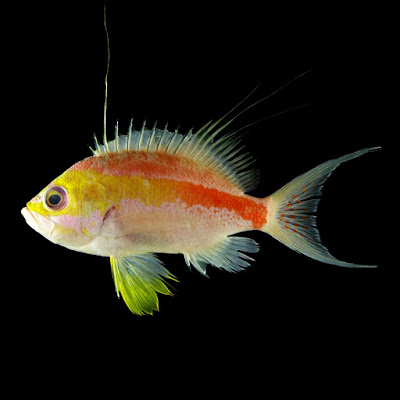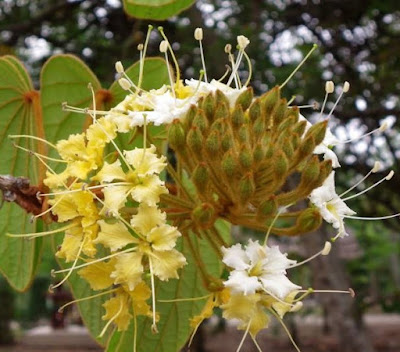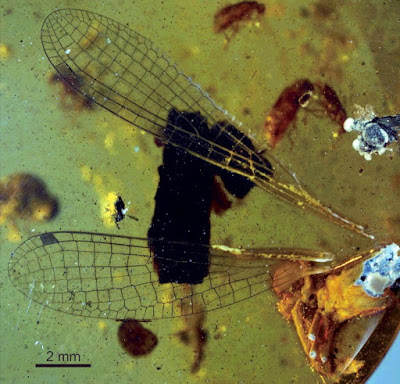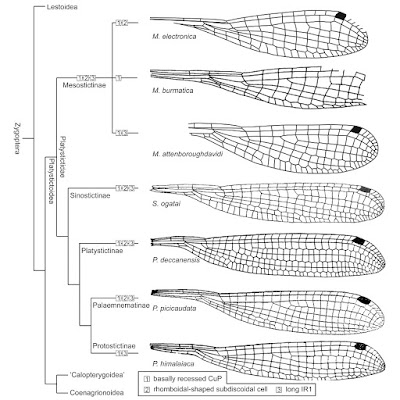[Most Recent Entries] [Calendar View]
Wednesday, August 16th, 2017
| Time | Event | ||||
| 11:12a | [Herpetology • 2017] On The Taxonomic Status of Eurylepis poonaensis (Squamata: Scincidae): Resolving A Long-standing Conundrum
Abstract The scincid genus Eurylepis was split off from the cosmopolitan genus Eumeces sensu lato, with Eurylepis taeniolatus being the type species, which is taxonomically poorly understood. The other nominate species in this genus is Eurylepis poonaensis, which was known only from its type locality and original description, and is the only known member of the subfamily Scincinae from near the Western Ghats. However, earlier studies raised doubts about its specific validity, often without examining type or other specimens. We collected fresh samples of this species from the type locality and nearby areas. Based on the examination of the holotype and the new material, we provide a detailed redescription of E. poonaensis, additional data on its skeletal structure, habitat, and natural history. We also provide a detailed redescription of E. taeniolatus based on the holotype to avoid further taxonomic ambiguity. Key words. Taxonomic resolution, species redescription, Eurylepis taeniolatus, India. Eurylepis Blyth, 1854 Eumeces Wiegmann, 1834 (in part). Eurylepis Blyth, 1854. Type-species: E. taeniolatus Blyth, 1854. Plestiodon Theobald, 1866, by synonymy of E. taeniolatus Mabouia Anderson, 1871 (in part), by synonymy of E. taeniolatus
Redescription of Eurylepis poonaensis (Sharma, 1970) Eurylepis poonaensis (Sharma, 1970) Eumeces poonaensis Sharma, 1970 Eurylepis poonaensis Griffith et al. 2000 Eurylepis poonaensis Schmitz et al. 2004 Holotype: ZSIK 21159. Type locality: Katrajghat, Poona (= Pune), Maharashtra, India. Redescription of Eurylepis taeniolatus Blyth, 1854 Eurylepis taeniolatus Blyth, 1854 Eumeces taeniolatus Stoliczka, 1872 Mabouia taeniolata Anderson, 1871 Plestiodon scutatus Theobald, 1868 Eumeces scutatus Boulenger, 1887 Eumeces taeniolatus Smith 1935 Eumeces taeniolatus Taylor 1936 Eurylepis taeniolatus Griffith et al. 2000 Eurylepis taeniolatus Schmitz et al. 2004 Holotype: ZSI 2382. Type locality ‘Alpine Punjab’ Aniruddha Datta-Roy, Veerappan Deepak, R. Chaitanya, Channakeshva Murthy, Harshal Bhosale, Aparna Lajmi, Praveen Karanth, Krushnamegh Kunte and Varad Giri. 2017. On The Taxonomic Status of Eurylepis poonaensis (Squamata: Scincidae): Resolving A Long-standing Conundrum. SALAMANDRA. 53(3); 389–397. | ||||
| 11:28a | [Ichthyology • 2017] Sacura sanguinea • A New Species of the Anthiadin Genus Sacura (Perciformes: Serranidae) from the Andaman Sea
Abstract Sacura sanguinea n. sp. (Serranidae: Anthiadinae) is described on the basis of two male and one female specimens from the Andaman Sea. The new species is characterized by the following characters: dorsal-fin rays X, 15; pored lateral-line scales 34; gill rakers 8 + 23 = 31; body depth 42.6–44.7% of SL; head length 39.5–41.4% of SL; pectoral-fin length 32.4–33.1% of SL; poorly defined broad yellow band from anterior profile of head to middle of body, the band gradually becoming red around middle of body and ending at caudal-fin base; caudal fin with distinct red spots centrally; and large dark red blotch posteriorly on spinous portion of dorsal fin in females. Keywords: Pisces, Perciformes, Serranidae Hiroyuki Motomura, Tomohiro Yoshida and Veera Vilasri. 2017. New Species of the Anthiadin Genus Sacura (Perciformes: Serranidae) from the Andaman Sea. Zootaxa. 4306(2); 291–295. DOI: 10.11646/zootaxa.4306.2.10 | ||||
| 2:22p | [Botany • 2017] Phanera larseniana | เครือศักดิ์สุวรรณ • A New Species (Leguminosae: Cercidoideae) from northeastern Thailand
Abstract Phanera larseniana, a new species from north–eastern Thailand, is described and illustrated. It most closely resembles P. rubro-villosa but differs in the length of the floral parts, and in the number and position of the staminodes. The species is known only from a single locality in north-eastern Thailand. An illustration and photos of the new species are provided. Keywords: Bauhinia, Cercideae, Fabaceae, IUCN Red List, Phu Phan National Park, woody climber, Eudicots Phanera larseniana Chantaranothai, Mattapha & Wangwasit, sp. nov. Phanera larseniana is similar to P. rubro-villosa but differs in having a shorter hypanthium, smaller calyces and petals, longer fertile filaments, longer ovary and style. Fertile filaments and style are much exserted (vs. inserted in P. rubro-villosa). Etymology:— The species is named after Supee Saksuwan Larsen and the late Professor Kai Larsen, prominent botanists who contributed the account of the genus Bauhinia to the Flora of Thailand. Vernacular name:— Khruea Saksuwan (เครือศักดิ์สุวรรณ), "เสี้ยวกำมะหยี่". Distribution:— Only known from north–eastern Thailand (Fig. 3). Habitat and Ecology:— Dry evergreen forest, elevation of ca. 200 m. Phenology:— Flowering March–April. Fruiting April–May. ...... ดร.คณิต แวงวาสิต รักษาการหัวหน้าสวนพฤกษศาสตร์ขอนแก่น เปิดเผยว่า สวนพฤกษศาสตร์ขอนแก่น ได้ดำเนินการศึกษาวิจัยและรวบรวมข้อมูลด้า Pranom Chantaranothai, Sawai Mattapha and Khanit Wangwasit. 2017. Phanera larseniana (Leguminosae: Cercidoideae), A New Species from Thailand. Phytotaxa. 303(2); 187–193. DOI: 10.11646/phytotaxa.303.2.9 | ||||
| 2:29p | [PaleoEntomology • 2017] Mesosticta davidattenboroughi • Mesostictinae subfam. nov., An Archaic Group of Platystictid Damselflies (Odonata: Zygoptera) from mid-Cretaceous Burmese Amber
Abstract Odonatans are quite rare in the fossil record compared with the other insects, especially in Cretaceous amber inclusions. The extant family Platystictidae is one of the most diverse Zygoptera, but short of fossil records. In this paper, a new species, Mesosticta davidattenboroughi sp. nov., is described from mid-Cretaceous Burmese amber, representing the third-known fossil species of Platystictidae. Mesosticta davidattenboroughi sp. nov. has a long IR1 beginning one cell distal of the base of RP2, confirming the previous attribution of Mesosticta Huang, Azar, Cai & Nel, 2015 to Platystictidae. It differs from other species of Mesosticta in having a long IR1 and a basally crossed subdiscoidal cell. The fossil genus Mesosticta shares the diagnostic characters of the modern platystictid genera, viz. a basally recessed ‘CuP’ (shared by all species), a very long IR1 (only in Mesosticta davidattenboroughi sp. nov.), and a specialized subdiscoidal area mostly rhomboidal in shape (only in Mesosticta electronica Zheng, Zhang, Chang & Wang, 2016). Based on the platystictid damselflies from Burmese amber, a new subfamily Mesostictinae subfam. nov. is established. Mesostictinae subfam. nov. represents the first fossil group of modern platystictid damselflies, documenting the appearance of Platystictidae as early as mid-Cretaceous. It differs from modern Platystictidae by the presence of fewer postnodal and postsubnodal crossveins, a short MP, the base of RP2 being nearer to the subnodus and the nodus lying more distally. Keywords: Platystictidae, Zygoptera, Odonata, Cenomanian, Cretaceous, Burmese amber
Order Odonata Fabricius, 1793 Suborder Zygoptera Selys-Longchamps, 1854 Superfamily Platystictoidea Kennedy, 1920 Family Platystictidae Kennedy, 1920 Subfamily Mesostictinae subfam. nov. Type genus. Mesosticta Huang, Azar, Cai & Nel, 2015. Mesosticta Huang, Azar, Cai & Nel, 2015 Type species. Mesosticta burmatica Huang, Azar, Cai & Nel, 2015. Included species. Mesosticta electronica Zheng, Zhang, Chang & Wang, 2016; Mesosticta davidattenboroughi sp. nov. Mesosticta davidattenboroughi sp. nov. Type species. NIGP164541, two complete forewings attached to body. Diagnosis. Forewing characters: IR1 long, originating one cell distal of base of RP2, nearer to N than to Pt; Arc aligned with Ax2; subdiscoidal cell basally crossed by one vein. Etymology. In honour of Sir David Attenborough, on his 90th birthday, for his appreciation of dragonflies. Locality and horizon. Hukawng Valley, Kachin Province, Myanmar; lowermost Cenomanian, lowermost Upper Cretaceous. Daran Zheng, Bo Wang, André Nel, Edmund A. Jarzembowski, Haichun Zhang & Su-Chin Chang. 2017. Mesostictinae subfam. nov., An Archaic Group of Platystictid Damselflies (Odonata: Zygoptera) from mid-Cretaceous Burmese Amber. Journal of Systematic Palaeontology. DOI: 10.1080/14772019.2017.1348395 David Attenborough gains new species namesake phy.so/422069741 @physorg_com |
| << Previous Day |
2017/08/16 [Calendar] |
Next Day >> |
